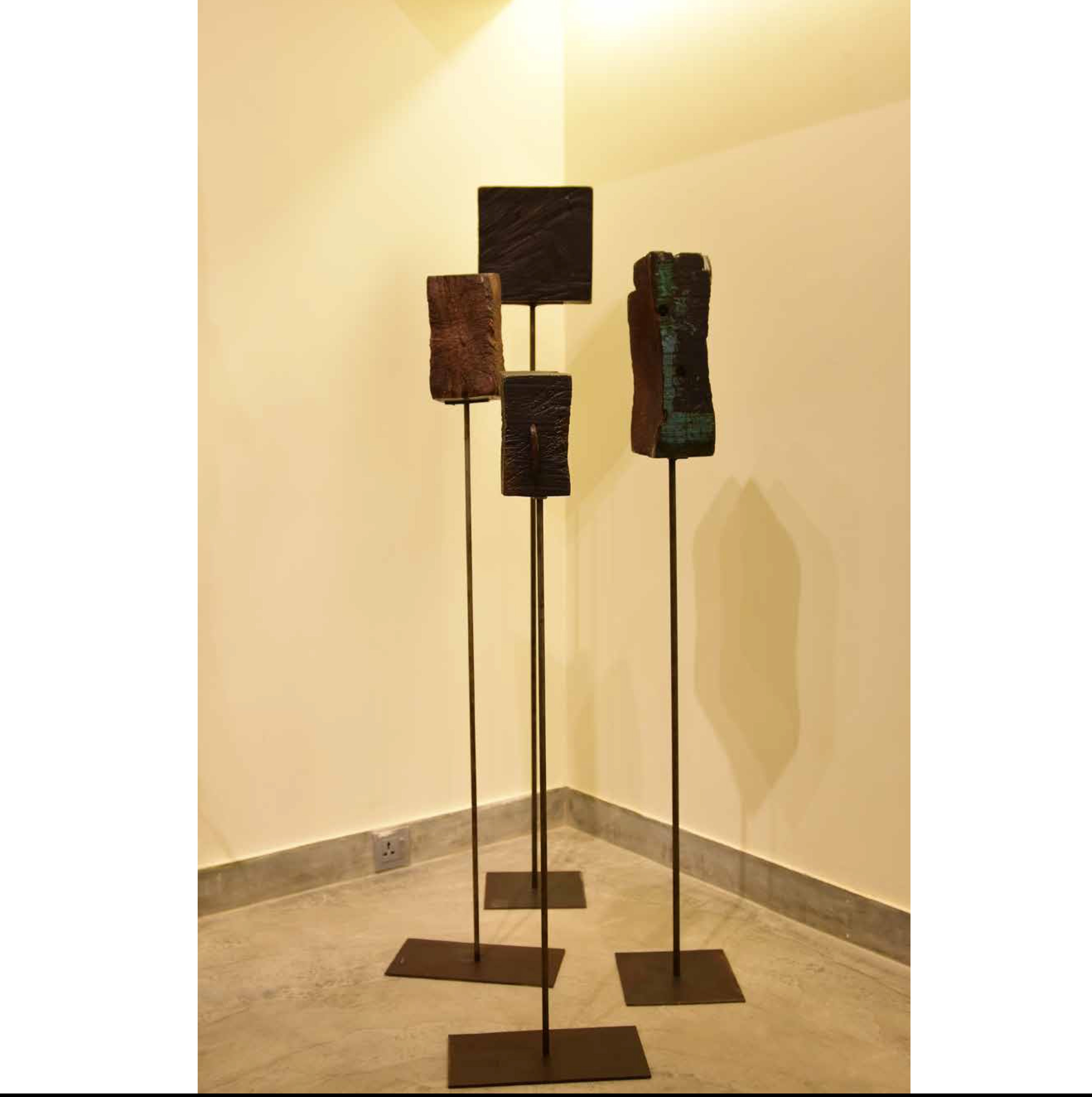From Naiza Khan’s explorations of the movement of objects through the ocean, and its impact on the city, to Fazal Rizvi’s contemplations of
From Naiza Khan’s explorations of the movement of objects through the ocean, and its impact on the city, to Fazal Rizvi’s contemplations of invisible borders within its waters, to Amean J.’s 118 ft. long panorama of Karachi’s coastline that was recently inaugurated at the new Islamabad International Airport. Perhaps it is the consequence of growing up alongside such an extensive stretch of coastline, or the natural enigmatic allure of the sea itself, but reflections upon its significance to the city in some capacity has always held the artist’s fancy. Sohail Zuberi’s recent solo project at Koel Gallery is perhaps the most extensive survey of this phenomenon.
Spanning the last 6 years, “Archaeologies of Tomorrow” is difficult to place on the artistic spectrum; it presents itself as a display of found objects, a collection of ‘relics’, an archive of the sea, a mapping of personal and collective histories, a social and political commentary, an environmental protest, an investigation on the nature of things, all tied together in one extensive body of works. These artifacts are carefully unearthed by Zuberi, cleaned and mounted as if for display in a museum, with minimal intervention from the artist, turning the exercise more into an archaeological endeavor, rather than an artistic one.
This body of work becomes a complex collection of ideas that puts equal weight on objecthood and process, with much of the ‘act’ of art making taking place through research and discovery. As the curator, Zarmeene Shah, posits, the act of walking becomes an integral part of this process, as the artist traverses a 2km patch of the coastline of Karachi every morning for the past 6 years, walking his dogs. During these walks these objects presented themselves as remnants of man’s interaction with the sea. Debris from fishing vessels and villages dotting the coastline, discarded religious paraphernalia, bones of marine life, all signify the psyche of a city and larger themes within its complex political, cultural and social fabric, unpacked through the very personal and private act of walking.
A large selection of pieces come from fishing villages and vessels; painted wood pieces from boats, kitchenware, weights for fishing nets, ropes, planks; all of these are meticulously collected and documented. The artist not only brings our attention to the legends of Morroro and Mai Kolachi from the origins of Karachi itself, but also these fishermen and their villages dotting the outskirts of the city, threatened with obliteration by its impending expanse.
Another very interesting series is a collection of religious items, washed up on the shore and fossilized. The artist explains how religious texts, prayer caps, book holder stands, etc. are wrapped in cloth and tossed into the sea for fear of causing disrespect to the holy words. This is considered the final abode, and it is hoped that the water would wash away the words, giving it a respectful burial. Shah says of this series: “This notion of permanence, however, is disrupted by Zuberi’s work, in that it provides exactly the opposite of this: the proof of impermanence.” However, the opposite seems to be the case, as those trying to be rid of these objects in a meaningful way, believing them to have been long-erased from this world, are confronted by fact of their survival. The sea is unable to erase or to obliterate, but only to break down or transform. These objects are awarded a sense of permanence, once through their rediscovery, and again through their reclamation by the artist as artifacts for display. The object still very much exists, perhaps in a zombie state, but as a solid entity; it stands as proof of its own endurance, a testament to its own permanence.
Combined with photographs and drone footage of the coast, the body of work is a complete survey of the Karachi coastline, the wider landscape hiding the complex truths within its beauty. Shah talks about the status of Clifton Beach as the most open public space in Karachi, freely accessible to all as a site of leisure and entertainment. Yet, this too faces the threat of gentrification through large-scale development projects in the works by DHA, restriction and limits soon to be placed on such a natural, expansive and turbulent body, rightfully meant for all. This centuries old relationship of man to sea is encapsulated in these relics, a relationship threatened by these controls on access. These objects make one wonder at the amount the sea swallows, as one studies what it chooses to spit out; they may restrict the movement of people, but the sea cannot be reigned, it will keep on rebelling, presenting its proofs as long as it pleases.

COMMENTS